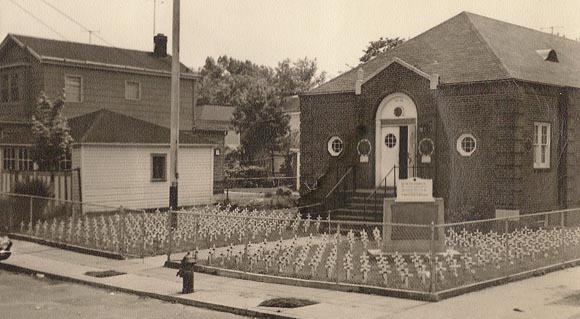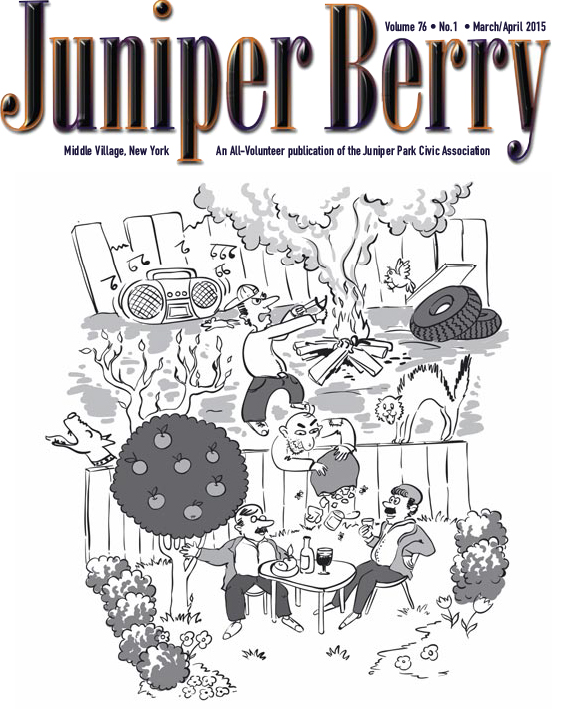In the days and months after World War 1 ended, communities around the country were looking for ways to memorialize the sacrifices of the young men who never came home. Less than two weeks after the war ended on November 11th, 1918, Queens Parks Commissioner (and Glendale resident) Albert C. Benninger announced plans to “erect a memorial tablet in one of the parks in Queens, probably Forest Park, for the soldiers of this borough who lost their lives in battle.”
While the plans for a borough-wide memorial were eventually moved elsewhere, Forest Park was still eyed as the site for a more localized memorial. In early 1919, The Patriotic League of Woodhaven brought together a group of sixty delegates representing the civic, fraternal, religious, political and other organizations in the community to plan for a way to commemorate the fifty-three young men who gave their lives in defense of their country.
The resulting organization, known as The Woodhaven War Heroes Permanent Memorial Committee, sought to use a site near the golf clubhouse in Forest Park and plant one oak tree for each of the young heroes. The plans included a silver name plate for each tree, and a granite monument with a bronze plaque containing the names of all 53 fallen heroes.
It was proposed that a Tag Sale be held to help raise the funds needed for the memorial. Essentially, Tag Sales were day-long events in which residents, whose addresses were listed in The Leader-Observer, would sell items from their household and donate the proceeds to the Permanent Memorial Committee. Over 200 households participated, netting sales of close to $1000.
The plans for the memorial came together quickly and it was noted that the planting of trees as memorials was a unique idea in the United States at the time, it being the only one of its kind. The first official meeting of the Permanent Memorial Committee took place at the old Republican Club on Jamaica Avenue in Woodhaven in mid-February; the trees were planted near the end of April and the dedication ceremony took place just six-months after the war had ended, on Sunday, May 11th, 1919.
On that day, the families of the fallen soldiers attended the dedication of the oak trees in front of the golf clubhouse in Forest Park. The ceremony was presided over by one of the soldiers who did return home; James Pasta, one of the chief members of the Permanent Memorial Committee (he would go on to become the very first Commander of Woodhaven American Legion Post 118).
Prayers were offered by Reverend George Sherman of St. Thomas the Apostle Church and local boys and girls took part in the ceremony. As each name was called, they would place a red carnation in a large white cross. At the end of the roll call, the cross and carnations were placed in an upright position among the Memorial Trees in the park overlooking the community the fallen heroes had lived in.
Thereafter, Woodhaven’s Memorial Day observances included the Memorial Trees. Parades would begin at Whiting Square, at 91st Avenue and 84th Street, stretch clear over to the other side of Woodhaven before turning back on Jamaica Avenue, wrapping up with the long march up Forest Parkway to the Memorial Trees in Forest Park where a ceremony hosted by the American Legion would be held.
Meanwhile, the Memorial Tablet had its own little history. It had been designed and ordered but by the time it arrived, it was too late to unveil in the park so it was held over until 1920. However, in 1921 it was announced that they hadn’t quite paid for it yet – and so, another Tag Sale was held, and the rest of the money was raised.
Also, the number of names on the bronze plaque had grown. In the early days of planning this memorial, the number of soldiers was announced at various times as both fifty-three and fifty-four. Because some boys had parents that lived in Woodhaven, or they were listed as living in Woodhaven or Ozone Park or Cypress Hills, depending on the newspaper or the dispatch, the roster grew as more names were considered for inclusion.
In the days leading up to each Memorial Day, the ladies of the American Legion Auxiliary would decorate the trees in red, white, and blue ribbons. Friends and family of the fallen soldiers that the trees were dedicated to would leave notes and flowers at ‘their’ tree. And so, the Memorial Trees and the Memorial Tablet in Forest Park became established as part of Woodhaven’s Memorial Day tradition.
But today, residents of Woodhaven are completely unaware of the Memorial Trees. This isn’t just a tradition that faded away – it’s one that suddenly vanished; forgotten as if it never existed. And so, we had a few compelling mysteries on our hands.
For starters, where exactly were these trees, and what happened to them? And secondly, whatever happened to the granite memorial with the bronze plaque?
After much research, the Woodhaven Cultural and Historical Society was able to solve the mysteries, and our findings will be revealed in the next edition of the Juniper Berry.



